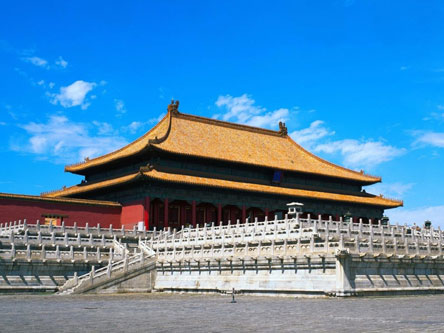(Ecns.cn)--Beijing's Palace Museum, also known as the Forbidden City, is a representative image of the country and home to a number of ancient relics considered precious in China.
But in recent months, a series of scandals has brought into question how the palace is being managed.
A hidden world
Though it has been open to the public for years, little is known about the museum's administration or the employees who work there.
The museum has officially denied any interviews with the media, but according to one of its employees, it has a complete and efficient administrative system.
"Honestly speaking, the management system and regulations protecting cultural relics are complete and effective, and with a large amount of government investment, the relics have been kept in good condition," said the insider.
There are over 1.8 million cultural relics kept in the museum, which can be classified into four categories: pictures, ancient containers, materials used in ancient royal palaces and books.
The museum inspects and repairs items in order to minimize natural decay, and most of them are kept in the basement. If employees need to move them they must be very careful, otherwise they will find themselves in serious trouble.
According to the insider, the museum employs over a hundred people, most of them over 35 years old, including soldiers, university graduates, professors and experts.
However, the insider's information is hard to confirm, and the scandals that happened at the palace recently were mostly silly mistakes, said Li Jianmin, a researcher from the Chinese Academy of Social Sciences.
Last May, a thief stole some items displayed in the museum, and just this month the Chinese business magazine Caixin alleged that the Palace Museum covered up an accident involving the immersion of a wooden Qing Dynasty screen in water—which the museum denies.
When met with problems, the museum often does not give satisfying answers or delays response. And even though it may tell the public it will look into the problems, no one can supervise its investigations.
Time for a change
Professionalism and transparency should be two characteristics of any museum, but this may not be the case at the Palace Museum, said Li.
"The museum itself is like a big gate, and if the museum wants to be understood, it should be open to its real owner – the public – and let people supervise it," said a social critic.
The public has not been informed about many of the cultural relics kept in the museum or what condition they are in, and the recent scandals have raised doubts about the government's ability to protect the relics, many of which could be centuries old.
"When I look at the shabby doors in the Forbidden City, I do not believe that the ancient items in the museum are being kept well, and the museum's response to the scandals has disappointed the public," said a web user.
"Maybe they've covered up many similar mistakes," wrote a Sina Weibo user. "Cutural relics preserved in the Forbidden City don't just belong to the museum, but to all Chinese people," wrote another Weibo user. "It contains too much historical heritage and culture," the user wrote, adding that those who are responsible for damaging the historical artifacts should be severely punished.
The Palace Museum "oversees national treasures, but who supervise them?" wrote a user. "Could it be that our future generations will have to learn our history from pictures?" wrote one called Mei'er_ling. The relics "managed to outlast time, but were damaged by idiots," said another Weibo user.
The Palace Museum was founded in 1925 and receives millions of visitors a year, mostly from within China. Though it is said to house more than a million cultural relics, a vast number of items are scattered in museums across the globe – including in the National Palace Museum in Taiwan – which Chinese officials and collectors are keen to have returned to China.
It is urgent for the museum to introduce a complete social supervisory system or build up an independent supervising committee from the public to effectively guarantee the development and work of the museum, said many experts.


















